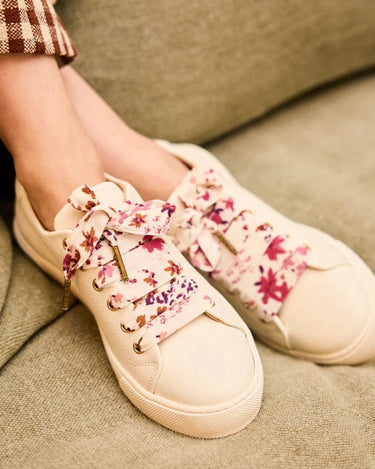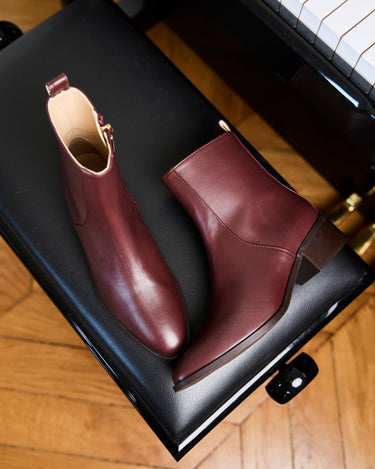The Dirty Secrets Of The Exotic Skins Trade
Fur is all but gone from the catwalks - virtually every big name in fashion has publicly dropped it, Fashion Weeks are implementing bans, and retailers are putting no-fur policies in place. With this fight done and dusted, attention is turning to another luxury villain: exotic animal skins.
By Sascha Camilli: writer, speaker, activist and vegan fashion expert.
Some of luxury fashion's most premium products are made from the skins of crocodiles, alligators, snakes, lizards, ostriches and other wild animals. Their bodies are commonly sold to be made into apparel and accessories for luxury fashion. A Birkin bag in crocodile skin from Hermès can cost up to $500,000, and has a waitlist of several years. It can take three reptiles to make just one bag.
Behind the luxurious exterior of exotic-skins accessories, a seedy and violent world of cruelty can be found. Snakes are often nailed to trees and their bodies are cut open before their skin is torn off. Lizards are sometimes decapitated. Crocodiles and alligators commonly live in cramped, crowded tanks before they are killed with the nape-stab method, which is meant to sever their spinal cords immediately – but it's not often used properly, meaning that animals die a slow and agonising death. Ostriches are often slaughtered at only one year of age, by being put into an electric stunner and then having their throats slit in front of other birds. What all these animals have in common is that they die terrifying deaths for nothing more than human vanity. "Conscious animals are being stabbed with metal blades and skinned for nothing but vanity,” says Mimi Bekhechi, Vice President for UK, Europe and Australia at PETA, whose international entities have unveiled the horrifying abuse of the exotic-skins trade several times. “Numerous undercover investigations have exposed the cruelty inherent in the exotic-skins industry, and we urge shoppers and designers to choose luxurious vegan leathers that leave vulnerable reptiles in peace.”
Just as most other animal-derived materials, exotic skins come with a set of environmental concerns. According to the Animal Welfare Institute, "Reptiles play a critical ecological role. They consume rodents and insects that can harm agricultural production and transmit disease to humans, and in turn are consumed by birds of prey and other predators. They also reduce carrion, control insect populations, and help maintain plant diversity by spreading seeds and cycling nutrients through ecosystems." Capturing them in their natural habitat and killing them for bags and shoes threatens ecosystems in a situation where the ongoing climate crisis is already wreaking havoc.

Exotic skins also represent a public health hazard. In 2020, as a global pandemic ravaged the world, we were forced to question our ways and realise that our choices affect both ourselves and others across the globe. Zoonotic diseases, such as coronavirus, SARS, MERS and bird flu, all originated in animals and were born from our use of animals for a range of trades. As a result, bans on the consumption of some exotic animals were introduced. But exotic animals are used for more than food - and experts found connections between the wild-animal skins trade and possible future pandemics.
This all seems rather unnecessary as high-quality faux versions abound on the market today – mock-croc and fake snake are among the hottest items on the market. Brands such as Jeane + Jax, Svala, and Estimon, to name but a few, experiment with embossing patterns inspired by exotic animals onto their vegan accessories.
Brands that have banned the use of exotic skins include Burberry, Victoria Beckham, Diane Von Furstenberg, Chanel, Mulberry, Jil Sander and more. High-street brands have also said no to exotic skins, but it's the luxury labels, who were previously supporters of the trade, who have truly made a statement with their bans. The entire state of California has also banned the sale and import of crocodile and alligator skins, paving the way for more territories to stand up against this trade.
As London Fashion Week and Melbourne Fashion Week ban wild-animal skins from their catwalks, the future of animal-friendly fashion is looking brighter. In a time whe when fashion faces more scrutiny over transparency and ethics, this is one trade we'll happily leave to the history books. In the meantime, if you love the look of exotics but want to shop cruelty-free, indulge your wide side with our Go Wild edit - all the glamour with zero animal skins.
By Sascha Camilli
About Sascha
Sascha Camilli is a vegan fashion writer, speaker and activist. Her book Vegan Style is out now on Murdoch Books. For more about Sascha, you can read our interview with her or read her newsletter Kind Of Wild. You can also follow her on Instagram.
For more articles like this in your inbox, sign up to our newsletter, and get up to 20% off your next purchase.
Related Articles

Vegan Christmas Gifts For Him

Vegan Christmas Gifts For Her


















































































































